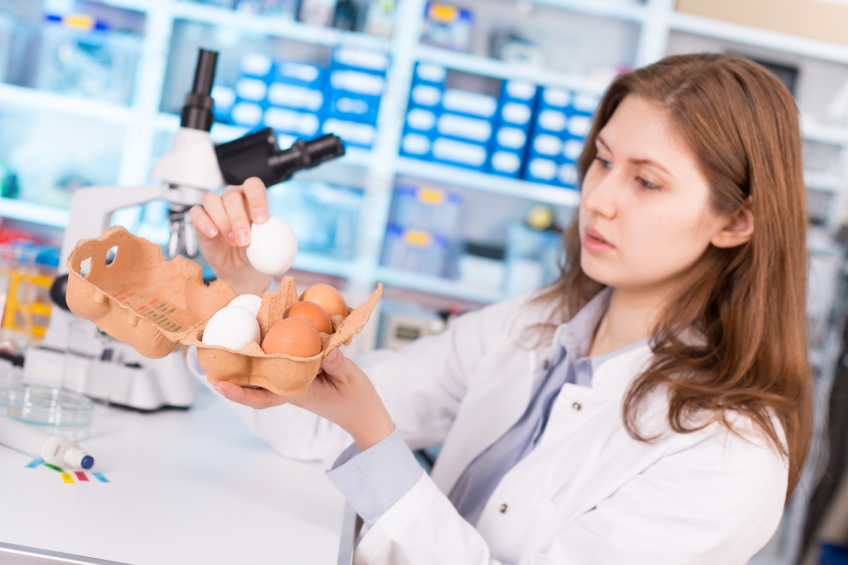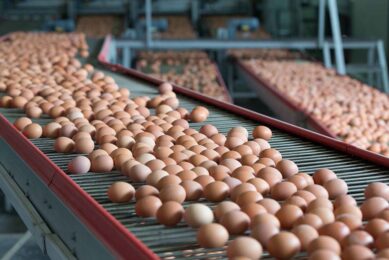Eggs – still packing surprises

Of all the things we humans eat perhaps none has been quite so extensively studied as the humble chicken egg. The egg isn’t just an excellent source of nutrition and high-source of protein, it is useful in many ways. But what have we learnt?
The egg has been used for all sorts of applications over the years from a component in paint and cosmetics to a handy way to generate vaccines and identify bacteria. Because of its usefulness we’ve spent a lot of time taking a pretty good look at the old egg and there isn’t much we don’t know about it. We understand its make-up, all the proteins it contains, all of the internal compartments and parts, how it ages and how it forms and develops. And so it makes it all the more exciting and surprising (not to mention rare) when we discover something totally new about our friend the egg. But that is precisely what we, working at Deakin University in Australia, have recently announced. For the first time we have reported the presence of microRNA in both the yolk and white of chicken eggs and have published a method for its extraction.
Turning genes on and off
So what is microRNA? Well microRNA has been the subject of a pretty intense study over the last decade or so and can be a little complicated; but perhaps the easiest way of thinking about microRNA is as acting as little ‘switches’. These switches can help in turning genes on or off. All animals, including ourselves, and plants produce microRNA and they are involved in responding to all manner of stimuli (stress, disease, hormones, hunger etc.) and can be found in many tissues and biological fluids such as saliva, blood and breast milk among others. But up until now, despite how important eggs are as a foodstuff and how extensively microRNA has been studied, no one had reported its presence in the egg.
Headaches for researchers
One of the reasons we’ve only come across this now is that the egg has always posed a challenge for researchers. The yolk is almost totally fatty molecules and the white mainly protein. In lower concentrations these compounds wouldn’t trouble a scientist in the lab, but in the quantities and concentrations found in the egg they lead to no end of headaches as they interfere with all the usual tools of the molecular biologists’ trade. This though was precisely what we, working in the school of medicine in Geelong, had to tackle. Through trial and error we were able to overcome the barriers these molecules posed by either using an enzyme to breakdown the protein in the white or by using a fat grabbing compound in the yolk. Once the fat and protein was removed it was relatively straightforward to extract the microRNA from what remained. What we found was that, whilst there is microRNA in both the yolk and white, the abundance and the variety of microRNA differs between the two fluids. The reason for these differences remains unclear.
Improve eggs
Well why does this finding matter? Is this merely an academic curiosity or does it mean something more? It isn’t just the fact that this discovery shows us that the egg still has mysteries to reveal that makes this finding exciting. It gives us fresh insights into chick development. It’s worth pointing out that the majority of the microRNA found in the egg have previously been shown to ‘switch’ on or off genes involved in the development of embryos in processes such as the building of blood vessels and muscle. We suggest that by packaging such microRNAs into the egg the hen may effectively be giving the embryo a head start of sorts, allowing it to develop into a healthier chick. Ultimately if we can learn which ‘switches’ can lead to more efficient production or stronger immune systems then in time we may be able to select for chickens with desirable egg microRNA production. Not only that but we might be able to use these ‘switches’ to improve the egg for consumption; imagine if we could we could find the right ‘switches’ to turn off the gene responsible for producing the common egg allergen?
Really we are only scratching the surface of what finding microRNA in the egg might mean. We can only speculate about the possible applications long-term; through better understanding the role of microRNA in eggs, we could improve things as diverse as shelf-life and freshness of eggs to improving the productivity, health and welfare of chicks. The possibilities are almost endless. Even if such outcomes may be way off in the future it is clear that the humble egg still has some surprises in store.
The paper was published in BMC Research Notes.
Join 31,000+ subscribers
Subscribe to our newsletter to stay updated about all the need-to-know content in the poultry sector, three times a week. Beheer
Beheer








 WP Admin
WP Admin  Bewerk bericht
Bewerk bericht